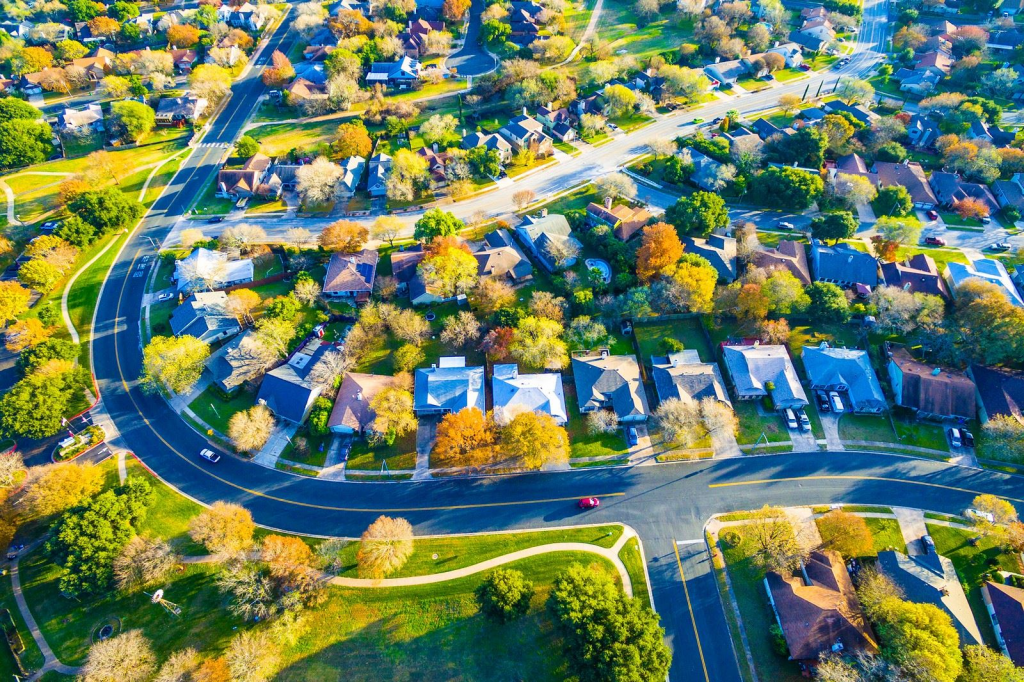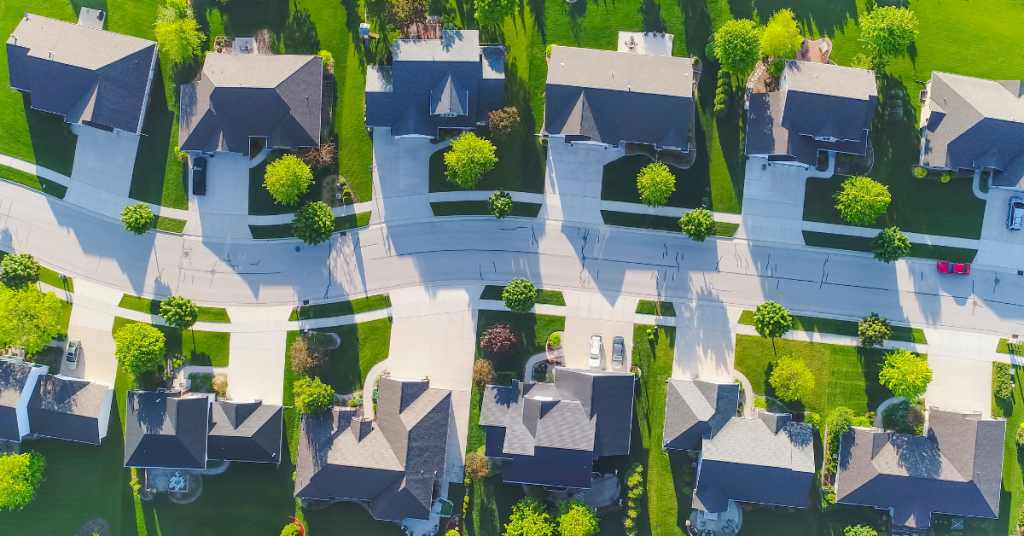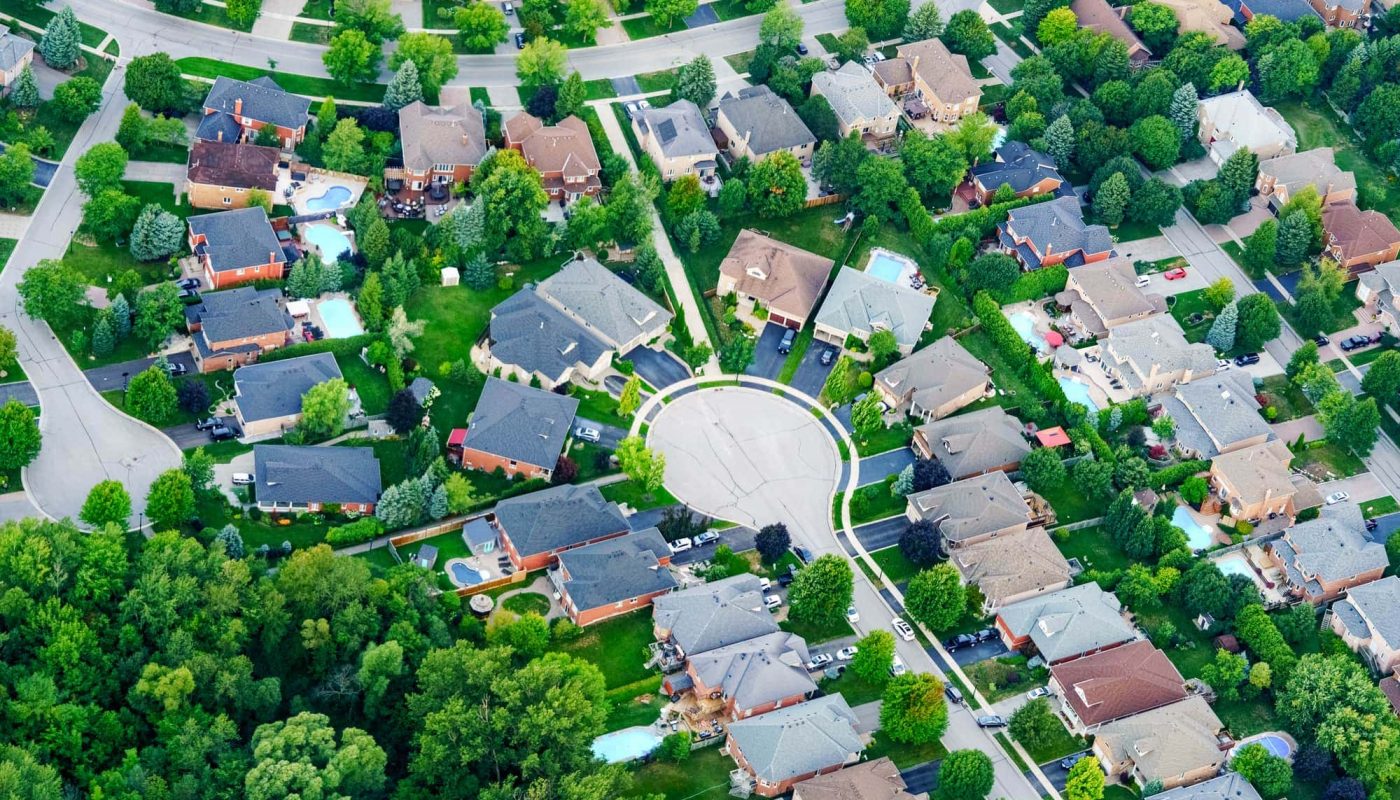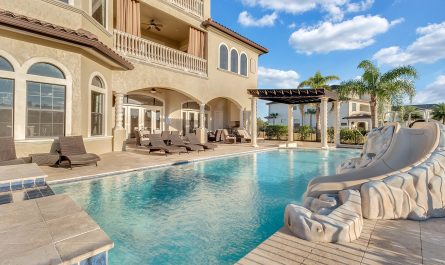Buying in a planned community offers many advantages that can improve your quality of life, boost property values, and create a sense of belonging. In a planned community, every aspect of the neighborhood is carefully designed. The layout is organized and the overall vision is uniform. Developers plan these neighborhoods from the start. They incorporate land use, shared amenities, infrastructure, and landscaping. This approach produces consistent architectural styles and well-maintained common areas. Buyers notice a cohesive look that enhances the beauty of the neighborhood.
Many people find this attractive when they compare it to a disjointed or unplanned development. Planned communities are built with long-term objectives in mind, which means that every detail is considered. Roads, sidewalks, lighting, parks, and recreational facilities are integrated into the layout. The overall planning also considers safety, aesthetics, and convenience. Buyers appreciate the high standards that such developments maintain. Many planned communities include recreational centers and swimming pools. They offer walking trails and playgrounds that are close to home. These amenities serve both practical and social functions. They provide outlets for exercise and opportunities for neighbors to meet. A strong sense of community is built through scheduled events and shared spaces.
They benefit from reduced risks of vandalism and disorder because the community standards are enforced by a homeowners association. These associations help maintain the aesthetic quality and financial health of the neighborhood. Buying in a planned community means entering an environment where many factors are optimized to achieve a high quality of life. This article will detail these benefits further and show how a planned community can be an excellent choice for buyers seeking stability, convenience, and growth.
Quality of Life and Amenities in Planned Communities

Planned communities feature many high-quality amenities that enhance daily living and boost overall satisfaction. Every detail is designed to serve the residents, and this careful planning leads to efficient use of resources. These communities are equipped with well-maintained parks, clubs, sports facilities, and entertainment options. Residents often share access to community centers that host events and social gatherings. A community pool, tennis courts, fitness centers, and playgrounds are common features that encourage an active lifestyle. These amenities not only serve recreational purposes but also promote wellness and reduce stress. Neighbors have a chance to meet, share experiences, and form lasting relationships.
This interaction creates a social fabric that supports families, singles, and retirees alike. The social benefits of planned communities extend beyond casual encounters. Regularly scheduled activities, holiday celebrations, and community-driven events help to forge strong bonds among residents. This cohesion can lead to a safer and more supportive environment as neighbors look out for each other. Moreover, planners often incorporate aesthetic standards that create attractive outdoor spaces. Landscaped gardens, tree-lined streets, and community parks contribute to the overall beauty of the area. In many cases, these common areas are managed by a homeowners association, which enforces rules and ensures continuous upkeep. The result is an environment that is visually appealing and functionally efficient.
Residents can rely on professionally maintained facilities that boost their quality of life. Local governments may also benefit as planned communities tend to reduce the strain on public services. The organized infrastructure ensures that roads, drainage, and utilities are reliable, which further enhances comfort and convenience. The abundant amenities serve as additional attractions for buyers who value an integrated approach to community living. All of these factors combined improve the quality of life significantly when you choose to live in a planned community.
Enhanced Security and Maintenance
One of the strongest advantages of buying in a planned community is the enhanced security and the high level of maintenance. These communities are designed with safety in mind, and security measures are often integrated into the planning process from the outset. The layout of streets and neighborhoods is planned to promote natural surveillance, making it easier for neighbors to observe their surroundings. This design can deter criminal activity and ensure that residents feel safe at any hour. Many planned communities also feature dedicated security personnel, gated entrances, or controlled access points.
The association enforces community guidelines and ensures that shared amenities remain clean and in good repair. Regular maintenance schedules cover everything from landscaping to street cleaning and repair. This level of upkeep prevents deterioration and protects property values. When infrastructure is well-maintained, residents spend less time worrying about costly repairs and more time enjoying the benefits of a secure environment. Furthermore, the presence of organized security protocols can lead to lower insurance premiums for homeowners. Insurers typically offer better rates for properties located in areas with robust security measures and regular maintenance.
The combined efforts of good design and proactive community management create a safer, cleaner environment. This approach not only enhances physical safety but also builds community trust. When everyone adheres to shared standards, there is a collective responsibility for the neighborhood’s well-being. In this environment, individuals can feel secure knowing that their investment is protected by consistent maintenance and strong security policies. Therefore, enhanced security and maintenance are critical benefits that support both the safety and financial stability of residents.
Cohesive Architectural and Aesthetic Standards
One of the significant benefits of buying in a planned community is the preservation of cohesive architectural and aesthetic standards. In these neighborhoods, developers enforce strict design guidelines that ensure a uniform appearance. These guidelines cover aspects like building materials, exterior colors, landscaping, and even the type of fencing allowed. Buyers appreciate consistency and a sense of order that contributes to the community’s overall beauty. Uniform architectural standards do not only improve the look of the neighborhood; they also protect property values over the long term.
This uniformity makes the neighborhood attractive to potential buyers if you decide to sell in the future. It also ensures that no single property disrupts the harmony of the community with out-of-place designs or poorly maintained homes. Moreover, well-planned communities often feature appealing public spaces such as parks, walking trails, and community centers that complement the residential architecture. Professional landscaping and strategic placement of green spaces enhance the visual appeal and create a natural environment that is both relaxing and inviting.
These collective design standards foster a sense of unity among residents. Neighbors take pride in their surroundings and are more likely to invest time and resources in maintaining their properties. In addition, aesthetics are not limited to physical design. They extend into the overall planning of public amenities and infrastructure. Well-lit streets, wide sidewalks, and tasteful public art contribute to a welcoming atmosphere. This adherence to aesthetic principles results in a vibrant neighborhood where every element has been thoughtfully considered. Homeowners benefit from the predictability of these standards, as each home reflects a quality that can be reliably marketed. This cohesion is a key factor for long-term appreciation and stability, making the investment in a planned community more appealing and secure.
Financial and Investment Advantages
Investing in a planned community can yield substantial financial benefits and offer strong investment potential. Property values in planned communities are often more stable and increase steadily over time. Developers design these areas with long-term growth in mind, which often leads to higher property appreciation compared to unplanned developments. Many planned communities include desirable amenities such as parks, pools, and community centers. These amenities contribute to the appeal and functionality of the neighborhood. As a result, properties in these areas tend to retain their value and attract quality buyers if you decide to sell.
In addition, the professionally maintained environment and effective security measures reduce the risks associated with real estate investment. A well-managed planned community generally experiences fewer vacancies and lower maintenance issues, which can translate into higher returns. Financially, if you secure a mortgage in a planned community, you may be able to lock in favorable terms that reflect lower risk. Many banks and lenders view these properties as lower risk, and this can result in lower interest rates and better loan conditions. Additionally, if you decide to refinance in the future, the increased equity resulting from stable property values can lead to even more competitive offers. Furthermore, planned communities tend to attract buyers who are looking for long-term stability rather than transient living spaces.
This creates demand and makes your property a sound long-term investment. Tax benefits are also a factor. Owning a home in a planned community might enable you to take advantage of deductions such as mortgage interest and property taxes. Over the years, these tax advantages can accumulate to significant savings. In summary, the financial and investment advantages of buying in a planned community lie in stable appreciation, lower risk, and robust market demand all of which contribute to sound long-term wealth building.
Community and Social Benefits
The social benefits of living in a planned community are hard to overstate. Planned communities are designed to create an environment where neighbors can interact and build lasting relationships. The layout includes common areas like parks, community centers, and recreational facilities that encourage social gatherings and communal activities. Residents often participate in neighborhood events such as barbecues, holiday celebrations, and sports leagues. These events foster camaraderie and create a strong sense of belonging. The consistency in design and planned amenities leads to predictable, comfortable surroundings where social interactions thrive.
Living in a planned community often translates into enhanced neighborly connections and increased trust among residents. The community spirit in such neighborhoods can lead to cooperative efforts, such as neighborhood watch programs and joint participation in local governance through homeowners associations. These associations organize events and enforce community rules, which further build a supportive community network. Social benefits also extend to families with children; planned communities usually provide safe environments and easy access to parks and schools. The structured approach to community living encourages a higher quality of life with reduced levels of social isolation.
Moreover, the cohesiveness and regular interactions help build long-lasting friendships and networks that can support residents both emotionally and practically. In addition, the sense of shared purpose among residents often results in better conflict resolution and a harmonious living environment. All these factors contribute to a unique blend of social stability, support, and community pride that enhances your overall living experience. When social bonds are strong, residents often find that their quality of life improves significantly.
Lifestyle and Convenience in Planned Communities
Living in a planned community offers many lifestyle and convenience benefits that can enhance your day-to-day living. These communities are carefully designed to ensure that important facilities are within easy reach. Shopping centers, schools, restaurants, and medical facilities are usually nearby, making daily errands less time-consuming. The layout of streets and neighborhoods is optimized for efficiency and safety. Wider roads, sidewalks, and well-placed traffic signals ensure a smooth commute. Many planned communities are located in areas that offer a balanced mix of urban convenience and suburban tranquility.
This creates a lifestyle that is both dynamic and relaxed. Convenience is not just about location; it is also about the amenities available. Planned communities typically provide various on-site facilities, such as fitness centers, community gardens, and clubhouses. The presence of these facilities means that residents do not have to travel far for recreational or social activities. Additionally, these communities are built with future growth in mind. Well-planned infrastructure, including internet connectivity and utility services, ensures that residents enjoy modern conveniences. Another important factor is the sense of order that pervades these communities. Uniform rules regarding property maintenance and aesthetics create a pleasant and predictable living environment.
This orderliness results in fewer disputes and better overall community management. Lifestyle in a planned community is enhanced by the ability to participate in organized events and activities that foster a shared sense of identity. The convenience of having everything close at hand cannot be overstated. It translates into saved time, lower stress levels, and a balanced lifestyle that supports both work and personal well-being. In essence, the convenience offered by planned communities creates a lifestyle where every day is simplified and enhanced by thoughtful design and access to vital services.
Maintenance, Rules, and Homeowners Associations
Maintenance, rules, and the role of homeowners associations are central to the success of planned communities. These communities are managed by professional associations that enforce rules and oversee the upkeep of common areas. Homeowners associations (HOAs) create a structured system where everyone contributes to the community’s welfare. They ensure that shared amenities, such as parks and recreational facilities, are well-maintained and operate smoothly. HOAs often have regular maintenance schedules and budgets that cover landscaping, repairs, and communal services.
This professional management ensures that properties retain their aesthetic appeal and market value over time. In addition, the rules imposed by HOAs prevent unsightly modifications and ensure consistency in architectural styles. These rules create a unified appearance and contribute to the overall attractiveness of the community. Consistent maintenance and regulation can prevent disputes among neighbors over property upkeep or noise and traffic issues. Homeowners who live in these communities benefit from a stable, well-organized environment with fewer unexpected costs. The enforcement of rules also helps to deter behavior that could negatively impact the neighborhood.
Many HOAs offer community newsletters and regular meetings to keep residents informed and involved. This transparency fosters a sense of shared responsibility and encourages proactive participation in community affairs. Furthermore, the presence of clear rules and reliable maintenance can provide peace of mind. You know that your property and the common areas will be cared for, which reduces stress and enhances the overall living experience. The role of homeowners associations is critical in ensuring the long-term viability of planned communities, as they uphold the standards that make the neighborhood desirable for both current and future residents.
Environmental and Sustainability Benefits
Planned communities are often built with environmental and sustainability goals in mind. Developers in these areas integrate green spaces, energy-efficient designs, and sustainable building practices into the community plan. This focus on sustainability results in a healthier environment for residents and lower utility costs over time. The design usually includes ample green areas such as parks and community gardens, which improve air quality and provide natural cooling effects. Sustainable practices might include efficient waste management systems, water conservation methods, and energy-efficient street lighting. The use of renewable energy sources, such as solar panels on community buildings, is also common in modern planned developments.
Such features not only reduce your environmental footprint but also lead to economic savings. Energy-efficient homes typically incur lower utility bills, which translates into long-term financial benefits. Moreover, a sustainable community design can enhance your property value. Buyers today increasingly value eco-friendly features, and this trend is likely to grow in the future. The integration of green infrastructure also creates a pleasant living environment. Lush landscaping, tree-lined streets, and dedicated cycling paths encourage residents to lead active and environmentally conscious lifestyles. The careful design of transportation networks within these communities can reduce reliance on personal vehicles.
This reduction in vehicle use can result in lower emissions and a quieter, cleaner neighborhood. In addition, many planned communities are built near public transportation hubs. This proximity further reduces the need for personal travel and encourages sustainable living. Overall, the environmental and sustainability benefits of planned communities offer both immediate and long-term advantages. They enhance your quality of life, lower your living costs, and contribute to a healthier planet. Investing in a community that prioritizes sustainability can be rewarding both financially and ethically.
Convenience of Infrastructure and Location

The convenience of infrastructure and the strategic location of planned communities provide substantial benefits to residents. These communities are often situated in areas with well-developed transportation networks and access to essential services. Proximity to schools, shopping centers, hospitals, and recreational facilities means that residents can enjoy a high quality of life with minimal travel time. Well-planned road systems and reliable public transit options reduce congestion and ensure that traffic flows smoothly. This ease of access is a primary factor in making day-to-day life more manageable. Modern utility services, including high-speed internet and reliable electricity, are typically built into the infrastructure from the start.
The placement of a planned community is also considered carefully. Developers choose locations that offer a balance of urban convenience and suburban tranquility. A great location will have low crime rates, strong local economies, and access to quality education. In many cases, planned communities are part of larger master-planned developments. They benefit from regional planning initiatives that include parks, public spaces, and community centers. This connectivity extends beyond the neighborhood and into the surrounding area, creating a comprehensive living environment.
Future developments and improvements are often planned well in advance, ensuring that the quality of life remains high even as the community expands. In essence, the convenience provided by a well-located planned community is a significant factor in improving your daily living. It reduces travel stress, supports modern lifestyle needs, and ensures that you have access to the services you need. This strategic placement is not only about immediate convenience; it also contributes to the long-term appreciation of property values. A community with strong infrastructure and a desirable location is more attractive to future buyers, which benefits you if you ever decide to sell your property.
Long-Term Value and Growth Potential
Investing in a planned community offers strong long-term value and growth potential. One of the major attractions of these communities is the predictability in terms of property appreciation. Designed with quality in mind, planned communities are built to last and maintain their standards over time. Consistent upkeep and enforced architectural guidelines lead to stable property values. Buyers in these communities often enjoy a high return on investment as the neighborhood grows in popularity and demand. The assets within a planned community, including homes and communal facilities, tend to retain their value during economic downturns better than those in less organized areas.
Furthermore, the long-term planning that goes into these communities means that there is little risk of unsightly or poorly maintained properties lowering neighborhood standards. This stability is a key consideration for both residents and investors. As the community evolves, property values tend to appreciate steadily. Well-planned amenities, maintained infrastructure, and effective management by homeowners associations all contribute to this growth. Moreover, the sense of community and shared investment in neighborhood standards further drives market demand. These factors can make planned communities ideal for long-term investments, as properties in these areas are more likely to appreciate in value. In addition, the potential for resale is higher due to the appealing features and strong community management.
Buyers often look for properties in neighborhoods that offer safety, convenience, and aesthetic appeal. A planned community meets these criteria, which can lead to a faster sale and a higher selling price when the time comes. Overall, the long-term value and growth potential of homes in planned communities make them a solid investment for the future. By choosing to live in or invest in these communities, you are positioning yourself for stable growth and enhanced financial security over the years.
Conclusion and Final Thoughts
There are many compelling benefits to buying in a planned community. These neighborhoods offer a structured and well-maintained environment that enhances quality of life. They provide abundant amenities, robust security, and cohesive design standards that protect property values. Planned communities excel in fostering strong social connections and offer convenient access to transportation, schools, and essential services. Financially, they tend to yield stable long-term returns. Consistent upkeep by homeowners associations, combined with strategic infrastructure and location choices, contributes to both immediate comfort and long-term growth.
Buyers appreciate the reduced risks of living in a community that is professionally managed and adheres to clear guidelines. The benefits extend to environmental sustainability and modern conveniences, which further enhance daily living. Additionally, long-term value and growth potential mean that investments in these communities are more likely to appreciate steadily over time. Understanding all these factors allows you to make an informed decision that aligns with your lifestyle, financial goals, and future aspirations. Whether you are a first-time buyer or an experienced investor, buying in a planned community offers many advantages that contribute to lasting satisfaction and security.
With everything considered, planned communities emerge as an attractive option for those seeking a high quality of life, financial stability, and an investment that grows over time. Embrace the structured design, reliable amenities, and strong community spirit that planned neighborhoods provide, and you will likely find that your home is not just a place to live it is a sound and rewarding investment.



